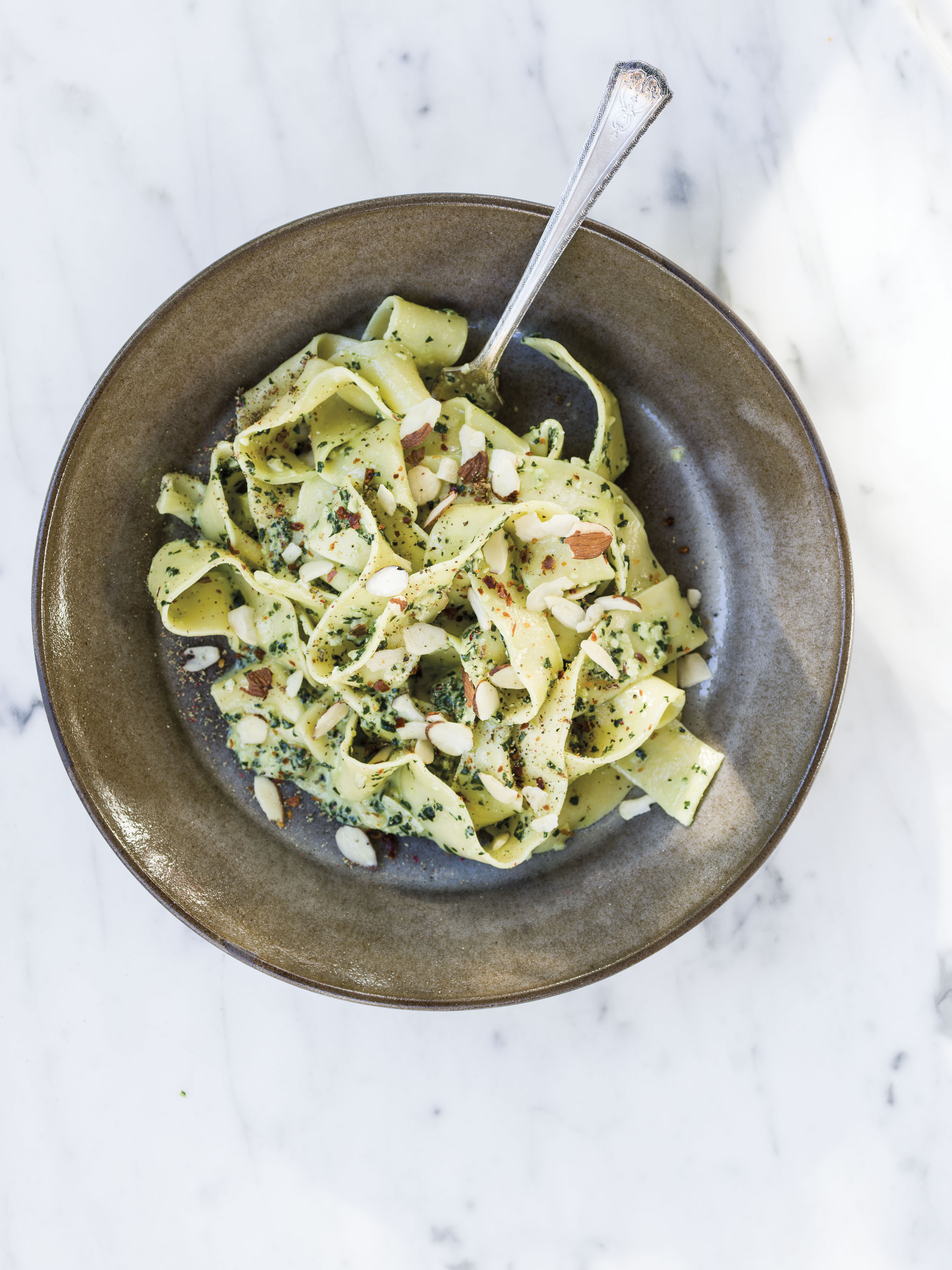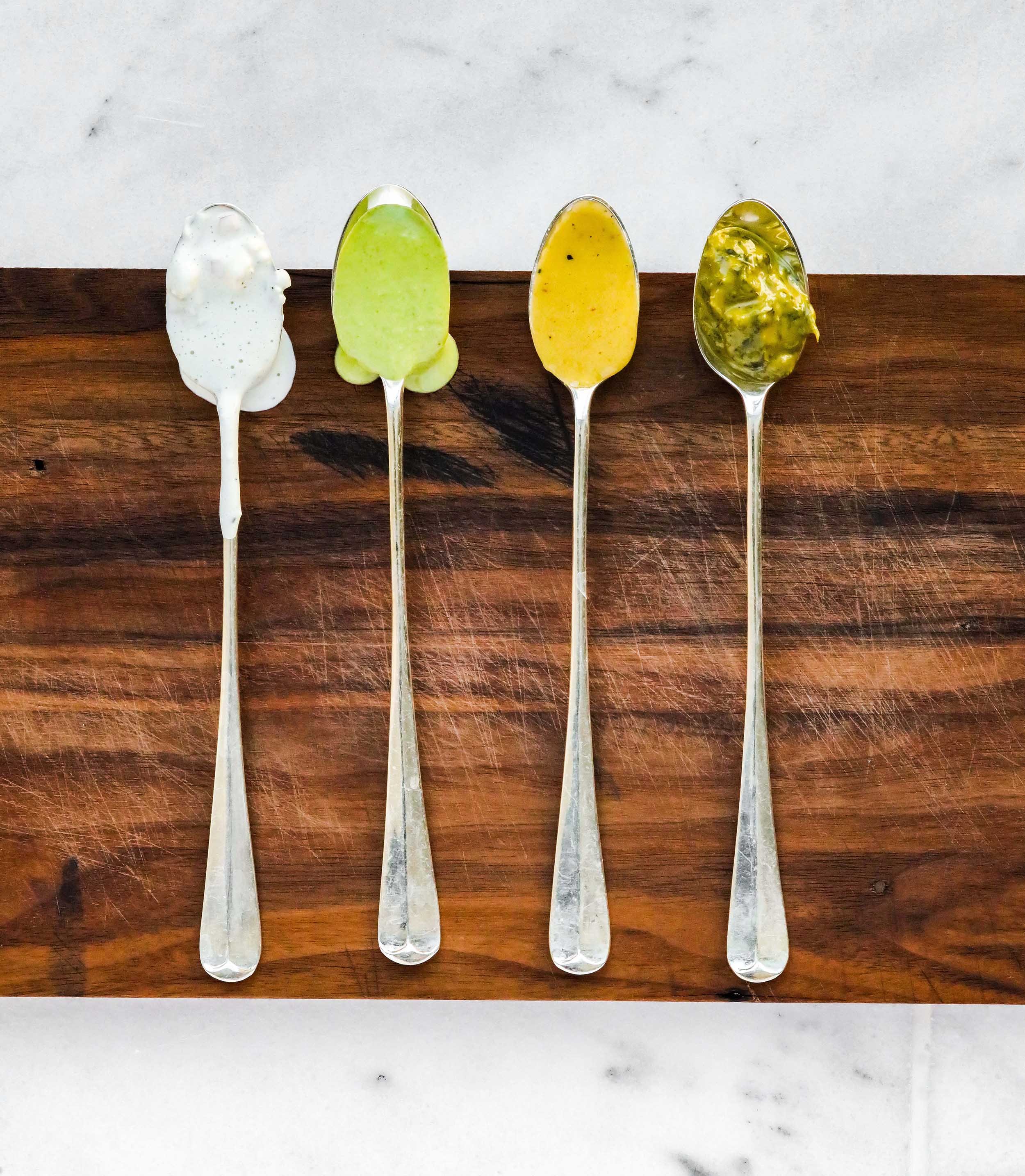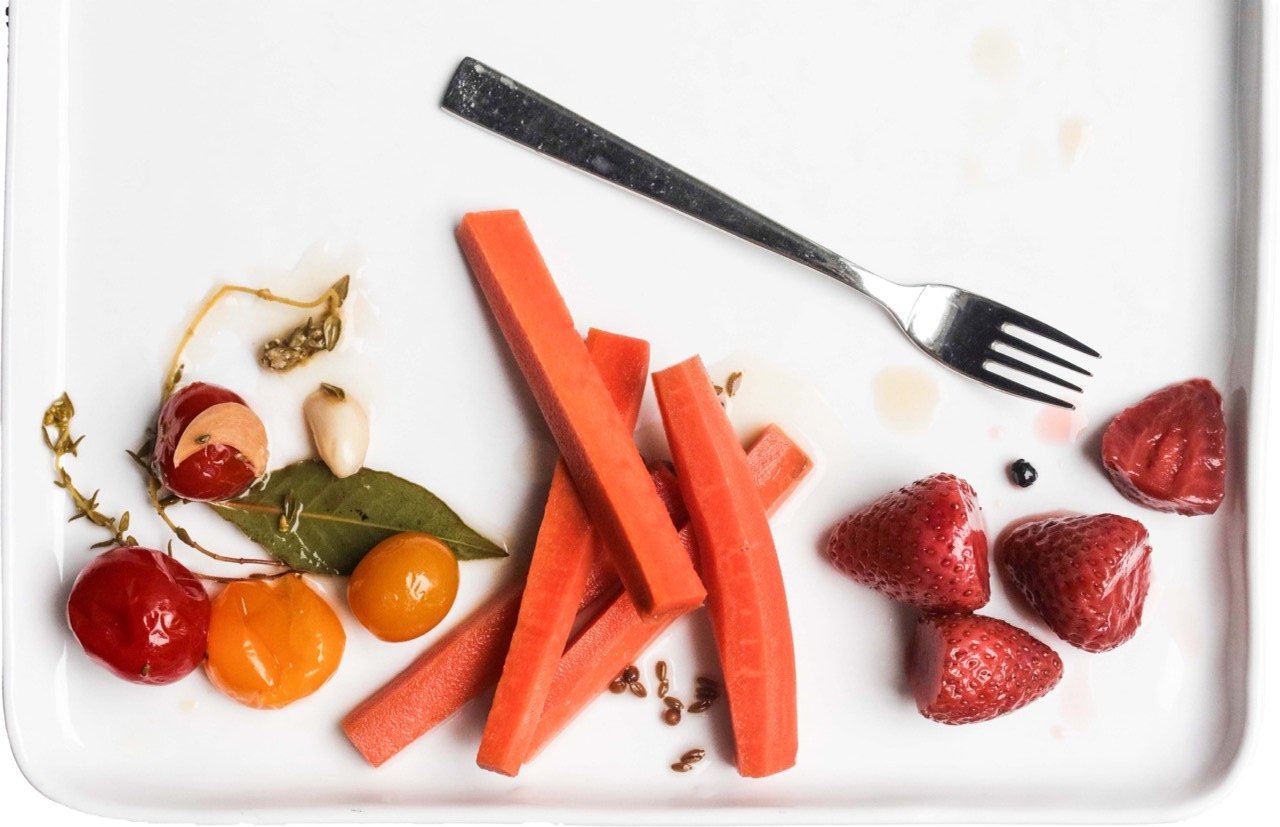Vinegar

Acid is an essential, but overlooked, element of cooking. And good vinegar can provide just the right touch.
Samin Nosrat, author of Salt, Fat, Acid, Heat, writes, “Acid balances flavor. ... On its own, acid isn’t particularly gratifying. It’s the way acid contrasts with other tastes that heightens our pleasure in foods. Salt, fat, sugar, bitterness, and starch all invariably benefit from the welcome contract acid provides.”
The most common sources of acid in cooking include citrus juice, like lemon or lime, and vinegar. In baking, buttermilk can provide acid. Cultured dairy products like plain Greek yogurt can also lend a gently acidic tang.
Yet home cooks often overlook acid as a key flavoring. “Acid in cooking is as important as salt,” says chef Justin Dean, a cofounder of local vinegar maker MadHouse. “And often it’s a missing component in food. Acid brightens all the flavors; a bit of lemon juice or vinegar brings all the flavors to the forefront instead of keeping them hidden in the background.”
Most of us have a bottle of white or red wine vinegar in the cabinet that we use to make vinaigrette salad dressing. But vinegar is so much more versatile than that. Dean thinks of vinegar in the same way he thinks of finishing salt (like Maldon or French grey): It is the final element, added at the end of cooking or on the plate, that brings a dish together.
WHAT IS VINEGAR, ANYWAY?
Vinegar is a double-fermented product. The first fermentation—of wine, beer, juice, cider, or grains, along with sugar and yeast—creates alcohol. Then, a benign bacteria called Acetobacter feeds on the alcohol and ferments it into a sour-tasting liquid. The French called this vinaigre, or “sour wine.” Most vinegars clock in around 5% alcohol. The “mother”— that semisolid mass at the bottom of a bottle of unpasteurized vinegar—is the source of the Acetobacter.
In addition to balancing the flavors in cooking, vinegar has unique properties that denature protein. That’s why vinegar is a common ingredient in marinade; it essentially tenderizes meat by altering its protein structure. (Too much time in an acid-based marinade can render the protein mushy.) It’s also why many recipes for poached eggs call for adding a splash of white vinegar to the cooking water; it helps coalesce the egg so it’s not stringy. The South American creation ceviche takes raw fish or shellfish and “cooks” it in an acid, often lime juice. And vinegar also alters protein in milk; it can be used to create curds in fresh cheese like ricotta or cottage cheese.
Inexpensive products on the grocery shelf are made with food-grade ethanol that’s then fermented, diluted with water, and adulterated with flavors or colors.
SEEK OUT QUALITY VINEGARS
Dean, whose company makes artisan vinegar, naturally steers home cooks away from those cheap products. “We start out with wine or beer or hard apple cider and then slowly ferment it to vinegar,” he says. “One of the biggest components is aging; few manufacturers do this, and that’s why commercial vinegars taste so sharp. Aging mellows the sharpness.”
As with so many things in cooking, better ingredients yield better results. Distilled white vinegar, for example, is suited for cleaning your windows but not for cooking; it’s flavorless and far too sharp.
MadHouse makes products from locally brewed beer and pressed hard cider, in addition to “rescuing” lots of wine from area wineries and distributors that has passed its optimal age for drinking.
“Chefs love our malt vinegar from local beer; it’s always a little different based on the grain build of the beer we use,” Dean says. “Every one of our vinegars vary from batch to batch.”
So you’re wise to spend a little more on the good stuff—true, imported balsamic vinegar; locally produced vinegar; specialty products made with Champagne or wine or sherry or high-quality apple cider. These have a mellower acidity that doesn’t bite as sharply as the cheap stuff, and the fruitiness of the wine or juice comes through.
“Vinegar is thousands of years old,” Dean says. “It was an accident; someone had wine and they left it open and Acetobacter bacteria got in there and turned it into vinegar. Whoever tasted it thought it was good.”
Herb Vinegars
Infuse fresh herb sprigs (thyme, tarragon, chives) in vinegar in a clean glass jar at room temperature for 2 weeks; remove herbs and transfer vinegar to a sterile glass jar (don’t leave fresh herbs in vinegar for food-safety reasons).
Quick Pickles
Combine vinegar, a splash of water, salt, and sugar or honey to taste. Add aromatics (cinnamon, allspice, clove, bay leaf) if desired. Bring to a boil. Pour over sliced vegetables or fruits; let sit for an hour or so. Use quick-pickled onions on tacos, cucumbers on sandwiches, fruits on a cheese board.
Gastrique
This simple sweet-sour pan sauce goes with pretty much anything; a little goes a long way. To make, heat 1/2 cup water and 2 tablespoons sugar over medium-high; stir until sugar dissolves, and then caramelize the sugar (light golden has 1/2 cup vinegar; the mixture will harden, but continue cooking to re-dissolve the sugar and create a syrupy consistency.
Shrub
This combination of fruit, vinegar, and sugar is excellent in cocktails or stirred into seltzer water for a mocktail. Add it to plain water for a better-for-you version of flavored water. To make, combine 2 cups mashed fruit and 3/4 to 1 cup sugar in a large lidded jar. Let sit 24 hours. Add 1 cup good apple cider or wine vinegar and stir to dissolve sugar. Let steep for 48 hours; strain into a sterile jar. Refrigerate up to 6 months.
Finishing
Use top-quality vinegars to finish dishes before serving. Sprtiz a bit over roasted vegetables, stir into a pan sauce, add to stews to balance flavors. Look for artisan vinegars flavored with herbs or made from interesting ingredients like plums or sweet corn.
Basic Strawberry Shrub
Basic Strawberry Shrub
Makes about 2½ cups
This combination of fruit, vinegar, and sugar is excellent in cocktails or stirred into seltzer water for a mocktail. Add it to plain water for a better-for-you version of flavored water. From MadHouse Vinegar.
2 cups ripe fresh strawberries, washed, hulled, and cut into chunks
1 cup granulated sugar
½ cup red wine vinegar
½ cup apple cider vinegar
1 large sprig thyme, mint, or basil
Wash a quart Mason jar and lid, then sterilize them by pouring boiling water over them; let them sit for 10 minutes, then empty and cool.
Add the strawberries and sugar, and use a wooden spoon to mash the berries to create a chunky mixture. Top the jar with the lid and let it sit on the counter overnight. After 24 hours, add the vinegar and herbs, if using. Cover and gently shake the jar until the sugar has dissolved. Stash the jar in the refrigerator for 1 week. Strain the mixture through a sieve, pressing on the solids with a wooden spoon to extract all the liquid and flavor. If you’d like a clear shrub, strain it again through a coffee filter (this will take several hours). Wash and re-sterilize your jar and lid; transfer the shrub to the jar and refrigerate up to 6 months.
Bryn’s long career in publishing took a left turn sometime around 2010, when she discovered the joy of food writing. Since then, she’s found professional nirvana as the editor of Edible Ohio Valley, author of The Findlay Market Cookbook, and occasional instructor at The Cooking School at Jungle Jim’s. Find her seasonal recipes at writes4food.com.






